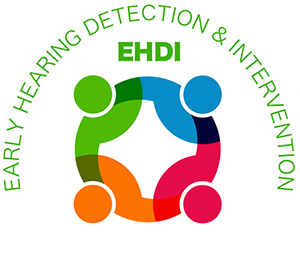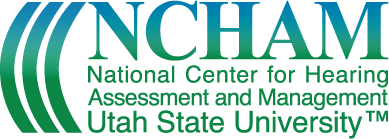COVID-19 Resources
Guidance from your state or local government may supersede any federal or organizational guidance. These resources are not exhaustive and are updated frequently, please check back often.
A. General Information
- COVID-19, also known as the novel coronavirus, is a highly infectious viral infection. Johns Hopkin’s physician, Lisa Maragakis MD, did a comparison between COVID-19 and the flu that concluded that the understanding of this virus is changing rapidly, and they are estimating that the mortality rate of COVID-19 is higher than most strains of the flu. Read the Johns Hopkins comparison here.
- The CDC has put out extensive guidelines for COVID-19 and how to reduce your chances of contracting the disease including protecting yourself and cleaning your home. Access these and other CDC resources for COVID-19 here. Additionally, the CDC has a YouTube channel focused on delivering COVID-19 resources in ASL.
- The U.S. Department of Health and Human Services (HHS) COVID-19 Public Education Campaign, We Can Do This, has developed a series of educational videos to increase public confidence in and uptake of COVID-19 vaccines. View these videos in ASL with English subtitles or in ASL with Spanish subtitles.
B. EHDI System Resources
- Current screening guidance
- The AAP recommends continued newborn screening including “States and territories have early hearing detection and intervention programs and systems in place to ensure that newborns are screened at birth for hearing loss. Clinical best practices advise that infants be screened by 1 month of age, are diagnosed for hearing loss by 3 months of age and enter into early intervention services by 6 months of age. Continued adherence to these standards amid COVID-19 is essential to ensure healthy and appropriate development”. According to the CDC, vertical transmission of COVID-19 is rare between mother and baby, but all providers who come in contact with the newborn should take infection control measures. Furthermore, the AAP suggests that “Healthcare workers should use gowns, gloves, standard procedural masks, and eye protection (face shields or goggles) when providing care for well infants. When this care is provided in the same room as a mother with COVID-19, healthcare workers may opt to use N95 respirators in place of standard procedural masks, if available”.
- Scripts for newborn hearing screeners
- COVID-19 EHDI Infographic for providers [PDF]
- Stakeholder Discussion Suggestions [PDF]
- Letter from Directors of Speech and Hearing Programs [PDF]
- Guidance from State EHDI Programs
- Flyer for Professionals: Do you know the newborn hearing screening results for each infant and toddler in your care? [PDF]
C. Guidance from other, related professional organizations
- Update September 28, 2021
- ASHA has updated their considerations for using masks for in-person services. This article provides guidance of what types of masks work best and when. Support for families and caregivers
- The AAP has released an article titled Do Masks Delay Speech and Language Development? This article provides tips to improve communication while wearing a mask.
- NewSTEPS, the laboratory resource for other newborn screening conditions has released guidance on a variety of newborn screening challenges such as providing continuity of operations, second or repeat screenings, and education and outreach to newborn screening stakeholders.
- Baby’s First Test has published reasons why newborn screening must continue during the COVID-19 pandemic, including the emergency nature of many newborn conditions that if treated early have lifesaving outcomes for newborns.
- The National CMV Foundation has released a statement from their scientific advisory committee regarding continued CMV screening during the COVID-19 pandemic [PDF].
- The Association of University Centers on Disabilities has released their FAQs [PDF] regarding COVID-19
- The National Association for the Deaf (NAD) released a statement about what full access to virtual learning means for students who are deaf or hard of hearing.
- The Rehabilitation Engineering Research Center RERC has assembled three guides to respond to communication issues that have emerged during this crisis.
- The Maternal and Child Health Bureau (MCHB), a division of the Health Services and Resource Administration, released a frequently asked questions regarding COVID-19’s impact on many of their critical support programs.
- The American Academy of Audiology (AAA) has declared “audiology practices as non-essential in terms of life-sustaining…” and encouraged audiology practices to seek other ways to provide services to their clients and to close their in-person office care. For more information, visit the AAA website.
- For AAA tools and resources regarding telehealth, visit the AAA Tele-audiology Toolkit.
- AAA developed guidelines for clinics to maximize safety.
- The CEO of American Speech-Language-Hearing Association (ASHA), Arlene Pietranton, shared a message, asking ASHA members to “seek and follow the guidance of [their] employer[s] [and] review the vetted recommendations from trusted sources such as the Centers for Disease Control and Prevention, [their] own state department of health, and the World Health Organization.” For updates, resources, and contact information from ASHA, visit their website.
- The American Academy of Pediatrics has developed a Telehealth Policy Checklist in response to COVID-19.
- The Hearing Review conducted a survey with hearing care professionals to understand how their work (e.g., number of hours worked per week, onsite and virtual appoints) is impacted by COVID-19. To access their report, go here.
- Visit the website of The Association of Maternal & Child Health Programs (AMCHP) for a list of CDC resources and other additional resources regarding COVID-19. On April 2 at 2pET, AMCHP will hold a COVID-19 Town Hall Series call to share information and to hear stories from MCH leaders - use this link to register.
- The American Public Health Association (APHA) announced that they “are urging the public health community to share science-based information with the public and are speaking out for outbreak response funding and support”. Visit the APHA website for additional advocacy and resources. They ask that individuals contact their members of Congress and urge them to prioritize public health in COVID-19 response legislation - visit this link to do so.
- APHA has created a webinar series exploring the science behind COVID-19 and mitigation efforts, including a lineup of public health, medical, and emergency experts. Visit here to view the first recorded webinar.
D. What are hospitals and healthcare practices doing to keep people safe
- On May 1, 2020, the American Academy of Audiology released recommendations for helping audiologists move toward in-patient care.
- Recognizing that healthcare plays a central role in treating those affected by COVID-19, the CDC has developed recommendations for healthcare facilitates to protect their patients and staff.
- The American Academy of Pediatrics have developed guidelines for pediatric practice management during the COVID-19 pandemic. This includes information on cleaning exam rooms and keeping waiting rooms safe.
E. Support for families and caregivers
- NCHAM, the FL3, DSPSHWA, and the AAP [PDF] worked together on developing a resource to help parents feel more comfortable with the decision to attend an in-person provider appointment.
- Hands & Voices has put together a list of resources that cover family support, education, accessibility for learning, and other resources as they relate to COVID-19 and families with children who are deaf or hard of hearing.
- Many parents are finding that work life balance is a particular challenge right now. The Child Mind Institute has many resources from daily tips, Facebook Live Chats, articles and more to help support all family members.
- The National Child Traumatic Stress Network offers information and suggestions for how to keep anxiety levels down while discussing, preventing and preparing for life during the COVID-19 outbreak.
- The National Association of School Psychologist website offers practical tips for being a role model during a time that can be scary for adults and children.
- Child Trends provides recommendations and resources for how to keep children and their caregivers mentally and emotionally healthy during the COVID-19 pandemic.
- The Center for Childhood Resilience provides multiple resources for what a parent/caregivers’ primary role is and how children of all ages can be supported physically, mentally and emotionally.
- Looking for age appropriate answers to questions that children may have regarding the COVID-19 pandemic? How can you take care of yourself while taking care of others? Zero to Three offers multiple tips and suggestions for families.
- Are you looking for ways to continue to move your child’s development forward even while staying at home? There are a variety of interactions that will set the stage for future language development. Check out some things you can be doing now by looking at this “Earliest Interactions” document [PDF].
F. Working from home
- The British Broadcasting Corporation (BBC) shared an article with advice on how to work from home effectively. Suggestions include having “clear-set expectations for communications day to day”, creating a space in your home exclusively for work, and avoiding feeling isolated.
- Business Insider conducted an interview with Google’s productivity expert, Laura Mae Martin, regarding how to manage work and life amid the coronavirus outbreak. Martin shared three pieces of advice: “Plan your day the night before… embrace the flexibility of your new schedule… [and] come up with a spot where you work.” Read more of the interview here.
- For more tips on how to work from home effectively, visit this article from The Muse.
- Working from home while caring for children can be a difficult adjustment for parents. Visit this article from Vox with advice on how to cope with this new section effectively.
- Read the following article for ideas on managing work from home while child care is unavailable. The author provides an example daily schedule for parents and children.
- For more tips on how to work from home with children at home, visit this article from CNBC.
- If you are looking for virtual platforms to hold video conference or shared screens here are some platforms with some instructional content.
- How to YouTube Live: Introduction to live streaming - YouTube Help
- How to Zoom Conference Call: Getting Started on Windows and Mac
- How to Adobe Connect: Understand the Adobe Connect meeting room basics
- GoToMeeting: The Quick Guide for GoToMeeting Attendees
G. Maintaining health and wellness
- Recognize the signs of stress that you may encounter during the COVID-19 pandemic. CDC looks at things to look for and how to take care of yourself during this stressful time.
- Self-care is always important but how do you do that during the COVID-19 Outbreak? Zero to Three shares reasons it is important to practice self-care and tips on how to do that.
- How do you stay physically and mentally healthy during a time of social distancing? This article from Time shares practical tips and considerations to do just that during this unusual time.
- Giving yourself a sense of normalcy during a time that is anything but normal can help keep you mentally healthy. Henry Ford Livewell offers some skills to help you feel better and take better care of those around you.
- Have you found yourself working in a new environment and you aren’t adjusting as well as you’d like? The Center for Workplace Mental Health offers tips for taking care of your mental health and well-being during a time when normal routines have been disrupted.
- COVID-19 has a broad reach that affects all areas of our lives. How can we stay healthy in all areas of our life during this time? Stanford Medicine has some helpful suggestions.


